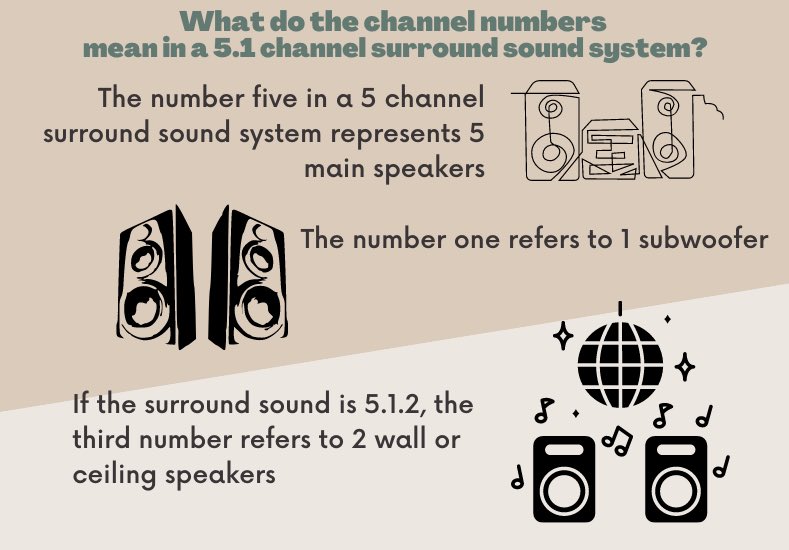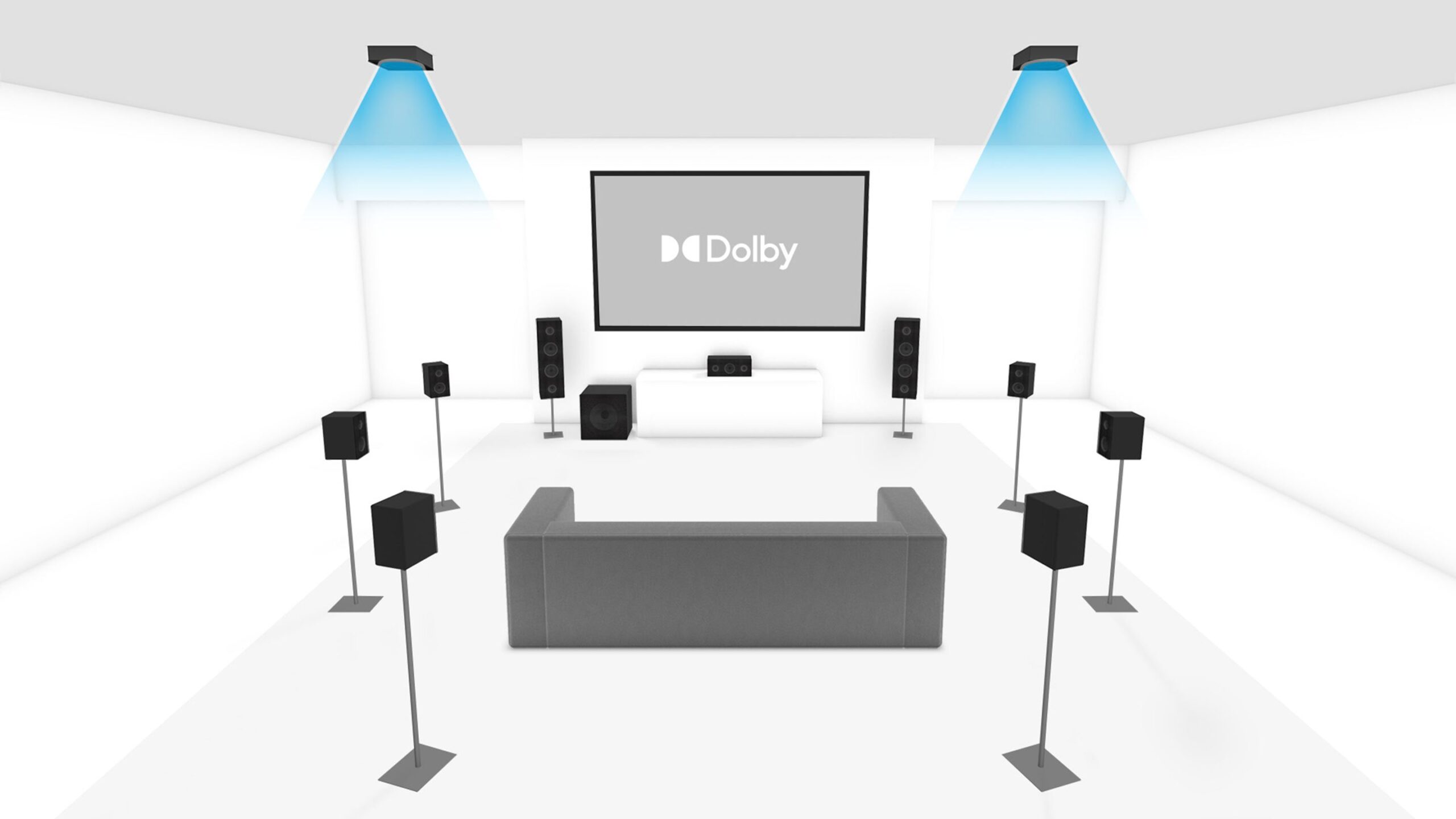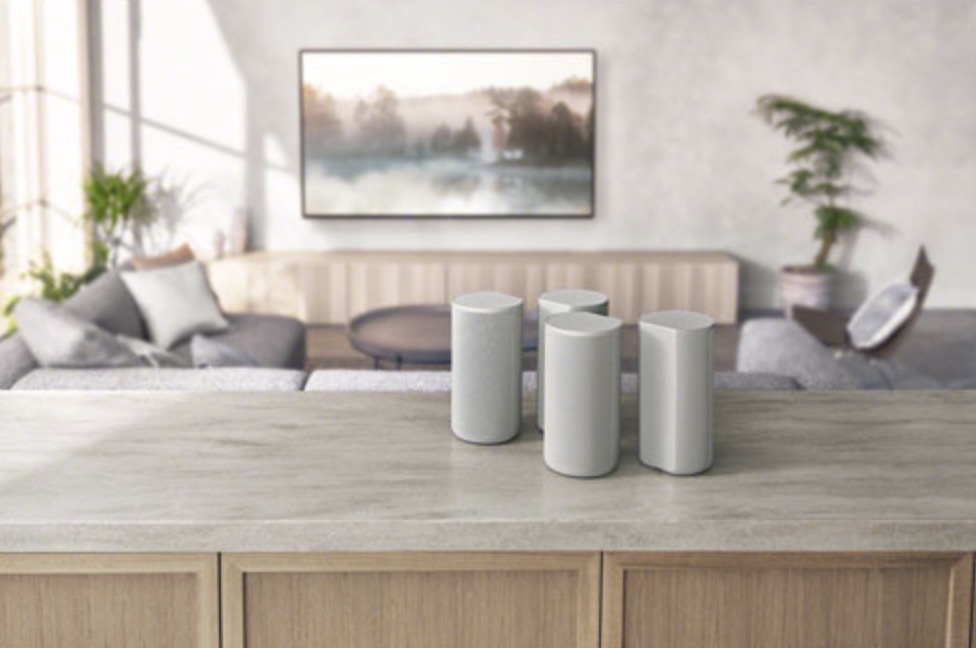
If you’ve ever shopped for a surround sound system, you may have found a few of the terms a bit confusing. There are a lot of options, from single surround sound speakers to a full home theatre in a box. To simplify shopping, here’s a look at some of the terms you’ll come across, the different surround sound channel configurations you can choose, and a few definitions of the audio technology used to create that immersive surround sound feeling.
Surround sound channels 101
In a surround sound set up, a channel refers to the main speakers that make up the system. Three of the most common types of surround sound systems is 5.1 channel surround sound, but you can also choose a smaller 3.1 channel system or a larger 7.1 channel system. A 5 channel surround sound system has 5 main speakers, a 3 channel surround sound has 3, and a 7 channel system has 7.
For reference, here is an infographic of what those numbers mean when you choose 5.1 surround sound.

When shopping for surround sound speakers, you’ll want to keep in mind that the numbers can always vary depending on how many speakers you’d like. For example, a 5.2.2 surround sound system has two subwoofers and two wall or ceiling speakers. A 9.2.6 system has nine main speakers, two subwoofers, and six ceiling speakers.
Setting up your speakers to create a sound field

The correct placement of your speakers is key to creating the most immersive feeling of surround sound in your living room or home theatre. Most people place the main 5 speakers in front, beside, or behind the TV. For example, with a 5-channel system, you’ll place three speakers in front of or beside your TV; one on the left, one on right, and one in the center. The other two main speakers can be placed on either side of your couch, so one on the left and one on the right.
Your subwoofer can be placed wherever you’d like, but most people will place it behind or beside their couch so they can really feel the low rumble during movies. If you have a 5.1.2 surround sound system with wall or ceiling speakers, you’ll place one to the left and one to the right of your TV. These overhead speakers are mounted on the ceiling or higher up on your walls.
Ultimately, you can place your speakers anywhere you’d like. Just keep in mind that the goal is to create a sound field or sound bubble with you seated directly in the center. The result is a feeling of complete immersion for soundtracks and sound effects, and they’ll feel as though they are projecting in front of you, beside you, and overhead.
Choosing a receiver

Beyond your speakers, the most important component in a surround sound system is the receiver. To simplify your shopping, you can choose a home theatre in a box that’s packaged with speakers and a compatible receiver. Everything will work together right out of the box. You can also choose a receiver based on your preferred brand or features, adding in your choice of compatible speakers.
When choosing a receiver on your own, you want to make sure you find one that supports the same audio technology as your speakers. You can learn more about the different types of receivers in the receiver buying guide.
Types of audio technology in surround sound systems

No matter which type of surround sound system you choose, your audio quality will depend on the wattage or power of your system’s speakers, what type of receiver you’re using, and what surround sound audio technology the system uses. There are different types of audio technology, also known as audio codecs, that are used to produce immersive sound.
Dolby Atmos vs Dolby Digital
Dolby Digital is an audio codec that compresses the expansive audio soundtracks created by movie sound engineers. Compression is required to transfer the original audio designed for movie theatres into something that works with smaller home theatre systems.
Dolby Digital creates horizontal 2D surround sound using an individual speaker system. Each channel or speaker in the system is independent and different types of audio, from dialogue to sound effects, are assigned to different speakers in the sound field.
Dolby Atmos is the latest generation of Dolby Digital. Instead of speaker-based sound, Dolby Atmos is object-based. It creates horizontal and vertical 3D surround sound using your main speakers as well as wall or ceiling speakers, and it places sound ‘objects’ within the sound field to give the feeling of audio that’s moving or tracking.
Imagine you’re watching a movie with a rocket taking off. Dolby Atmos would place the sounds of the engine rumbling in front of you for a period of time, and then move the audio up to the ceiling speakers as the rocket takes off. From top to bottom, you’ll see and hear the take off as though you’re witnessing it in person.
DTS and DTS:X
 Like Dolby Digital and Dolby Atmos, DTS and DTS:X are types of audio technology used to create surround sound. DTS (Digital Theatre Systems) is a surround sound format with the ability to produce lossless, real-world audio. Lossless compression is an audio technology that compresses original audio in such a way that no detail is lost. Dolby TrueHD is an audio codec that also produces lossless audio.
Like Dolby Digital and Dolby Atmos, DTS and DTS:X are types of audio technology used to create surround sound. DTS (Digital Theatre Systems) is a surround sound format with the ability to produce lossless, real-world audio. Lossless compression is an audio technology that compresses original audio in such a way that no detail is lost. Dolby TrueHD is an audio codec that also produces lossless audio.
DTS has been used in movies since the mid-1990s, and DTS:X is the most recent version of DTS audio technology. Like Dolby Atmos, it creates vertical and horizontal 3D surround sound using an object-based system where sound objects are placed within the sound field. DTS:X is specifically designed to mimic how humans hear audio, and when listening you’ll be treated to an immersive multi-dimensional sound experience.
DTS:X vs Dolby Atmos
DTS differs from Dolby in that DTS is encoded at a higher bit rate. Some will argue that DTS offers better quality than Dolby and a higher encoding rate results in the most realistic sound quality possible. There are others who believe slow and steady wins the race, with Dolby producing superior audio quality because it is processed slower.
You won’t have to choose between one or the other though, as most home surround sound systems support both Dolby and DTS:X. They also support other audio codecs to enhance surround sound audio including Dolby Atmos Height Virtualizer to support ceiling speakers, Dolby Surround, DTS-HD Master Audio decoding, DTS:X playback, and DTS Virtual:X 3D sound processing.
Tips for choosing your surround sound system

Now that you know what channels are and the differences between the audio formats, there are a few tips you can use to choose the best surround sound system for your home.
- More speakers equal more immersive sound – whether you choose a home theatre in a box or pick speakers and receivers a la carte, the general rule is that larger speakers equal louder, room-filling sound.
- Room size matters – A bigger room will require a bigger surround sound system. A normal size room is perfect for a 5.1 surround sound system, but to really fill a larger room you’ll want to choose a 7 or 9 channel system with one or two subwoofers and extra overhead speakers for height.
- Choose the right receiver – if you’re setting up surround sound speakers that supports DST:X and Dolby Atmos, you’ll want to have a receiver that can support those audio technologies as well.
Which surround sound will you choose?
Now that you know what surround sound channels are and how a few of the different audio technologies work, you’re ready to choose your own home theatre system. You can find home theatre speakers, speaker packages, receiver based home theatre systems, and home theatres in a box at Best Buy.



